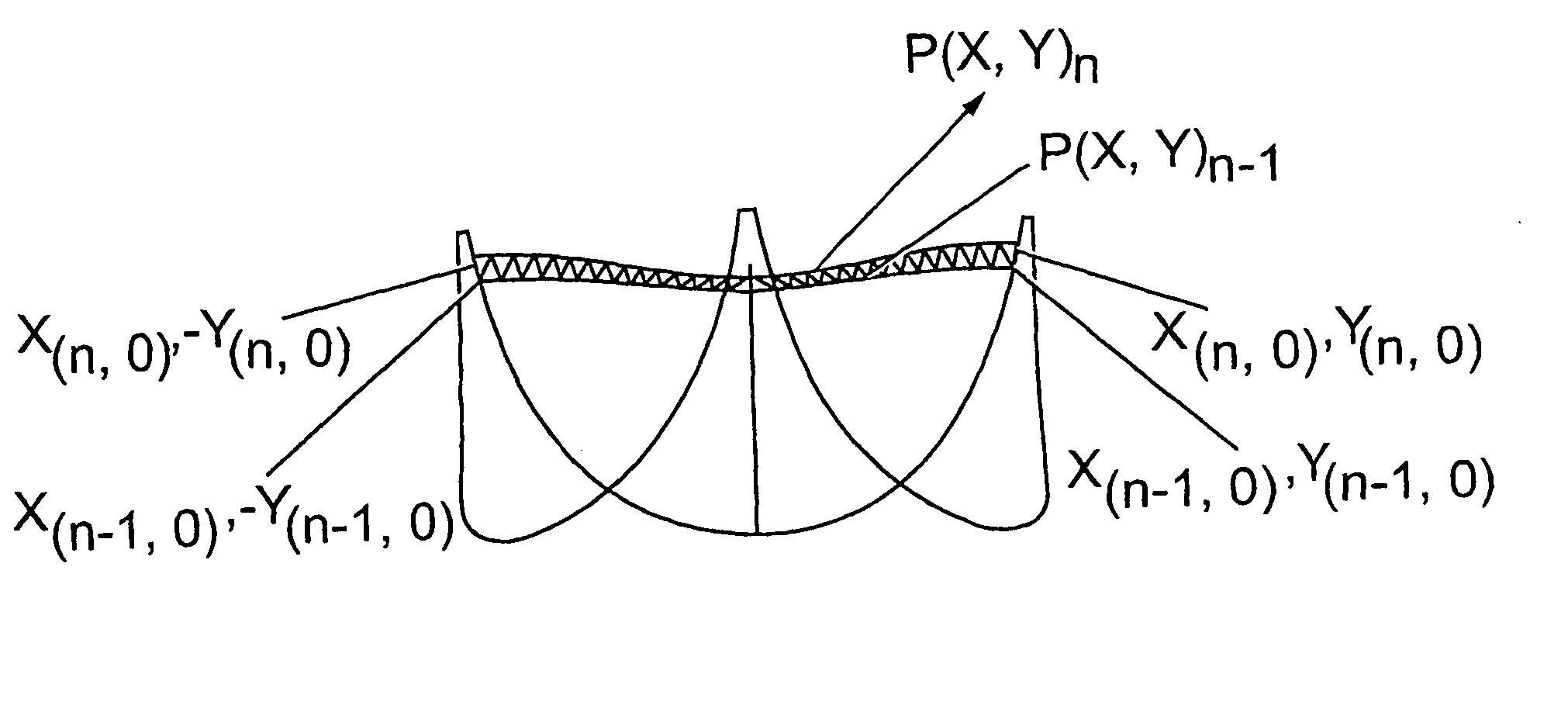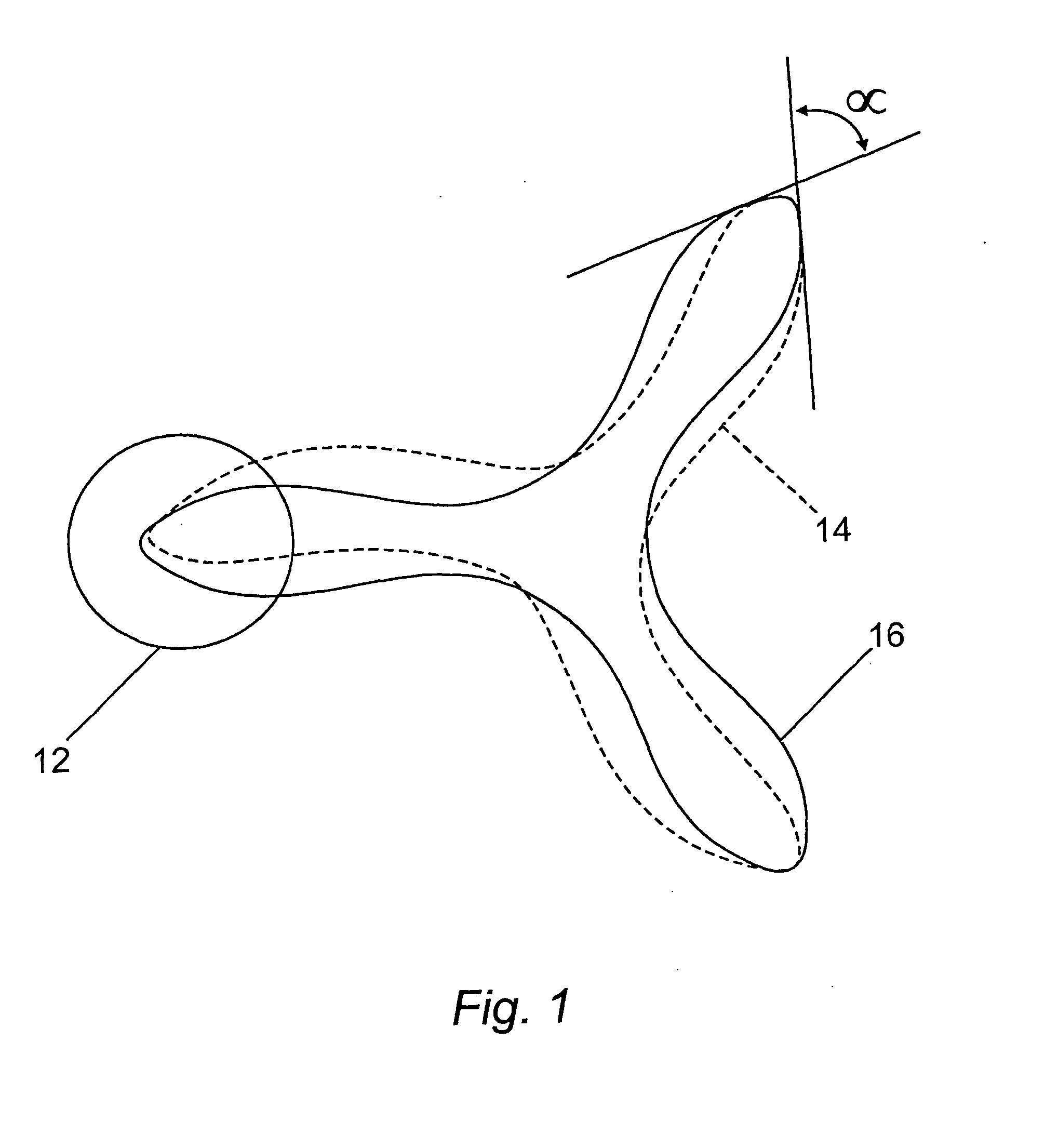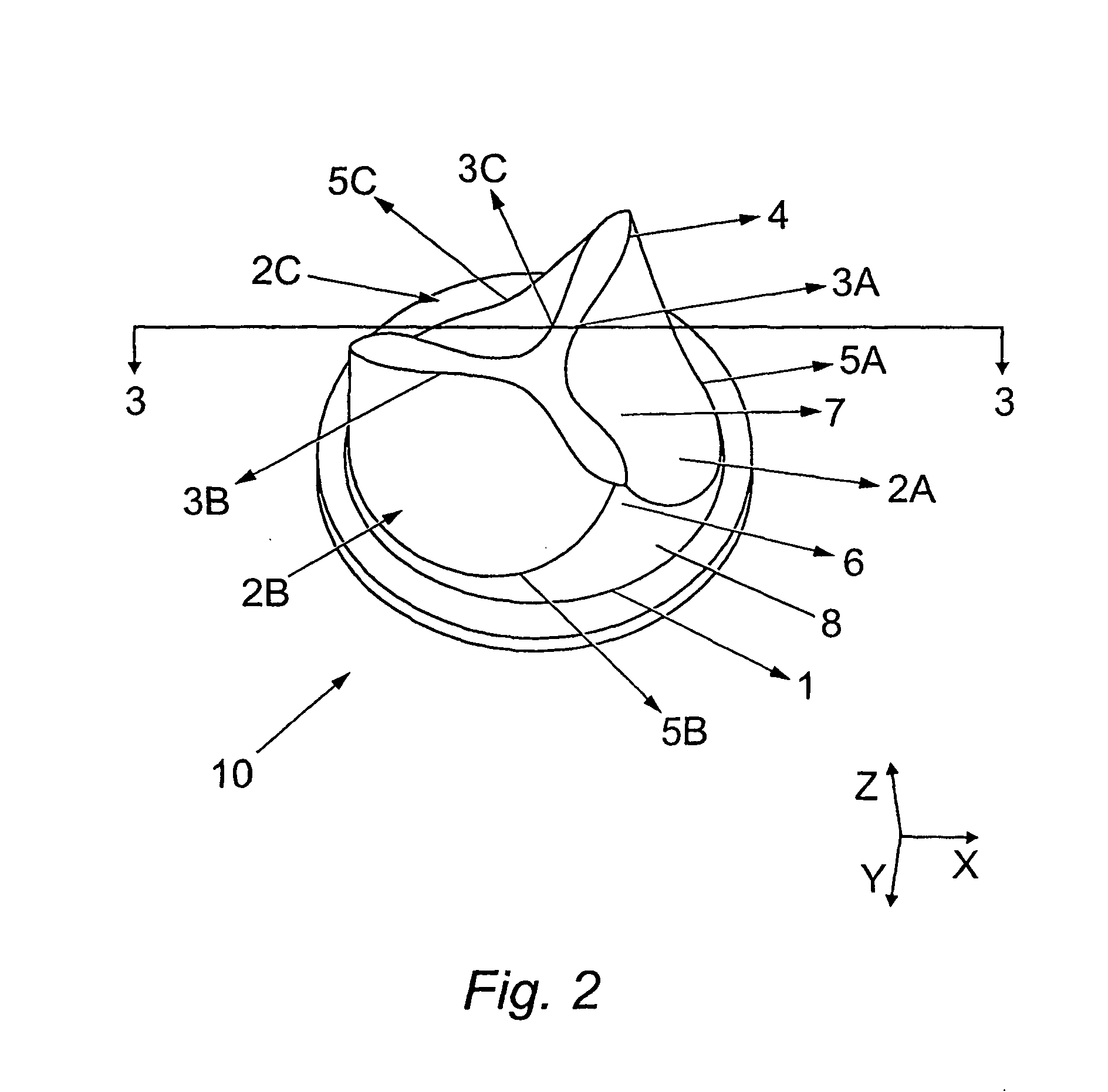Heart valve prosthesis and method of manufacture
- Summary
- Abstract
- Description
- Claims
- Application Information
AI Technical Summary
Benefits of technology
Problems solved by technology
Method used
Image
Examples
first embodiment
1. First Embodiment of Heart Valve Prosthesis
[0074] The following describes a particular way of designing a first embodiment of a valve of the present invention. Other different design methodology could be utilized to design a valve having the structural features of the valve disclosed herein. Five computational steps are involved in this particular method: [0075] (1) Define the scallop geometry (the scallop, 5, is the intersection of the leaflet, 2, with the frame, 1); [0076] (2) Geometrically define a valve leaflet in the closed position C; [0077] (3) Map and compute the distribution of area across the leaflet in the closed position; [0078] (4) Rebuild the leaflet in a partially open position P; and [0079] (5) Match the computed leaflet area distribution in the partially open or molded position P to the defined leaflet in the closed position C. This ensures that when an increasing closing pressure is applied to the leaflets, they eventually assume a shape which is equivalent to th...
example 1
[0131] The parameters described in the preceding sections are assigned the values set forth in Table 2 and are used to manufacture a symmetric valve. The included angle between adjacent leaflet free edges at the valve commissure for this valve is approximately 50°.
TABLE 2ParameterValue (mm)Closed positionZcO 0ZcO 0.0EcN(Z)EcN = 3.0.Z + 50.3EcO22.0EcJ20.0XT(Z) 0.0Partially-open positionθ12.7°EoJ50.0ZoO 4.0EoO51.8EoN27.7AuResult from iteration procedure finds thatAu varies from 1e−5 at the leaflet base to5.1 at 4 mm from the leaflet base to 3.8 atthe free edge.As(Y) 1.0BsResult from iteration procedure finds thatBs varies from 1e−3 at the leaflet base to1.6 at 3 mm from the leaflet base to 0.6 atthe free edge.
[0132]FIG. 12 shows the symmetric valve which is manufactured, using the values outlined in Table 1 and Table 2.
example 2
[0133] The parameters described in the preceding sections are assigned the values set forth in Table 3 and are used to manufacture an asymmetric valve. The included angle between adjacent leaflet free edges at the valve commissure for this valve is approximately 48°.
TABLE 3ParameterValue (mm)Closed positionZcO 0.0EcN(Z)EcN = 3.0.Z + 48.9EcO18.4EcJ20.0XT(Z)XT(n−1) = 0.97.(XT(n)) where XT(free edge) = 2.1Partially-open positionθ 7.1°EoJ50.0ZoO 5.0EoO51.5EoN29.0AuResult from iteration procedure finds thatAu varies from 1e−5 at the leaflet base to3.1 at 3 mm from the leaflet base to 2.2 at9 mm from the leaflet base to3.8 at the free edge.As(Y)Bs(Y) = (Y − c) / m where Bs = 1 at leaflet baseand m = 5.04 and c = −15.1 at leaflet freeedge.BsResult from iteration procedure finds thatBs varies from 1e−3 at the leaflet base to1.1 at 6 mm from the leaflet base to 0.4 atthe free edge.
[0134]FIG. 13 shows the valve which is manufactured using the values outlined in Table 1 and Table 3.
TABLE 4De...
PUM
| Property | Measurement | Unit |
|---|---|---|
| Angle | aaaaa | aaaaa |
| Angle | aaaaa | aaaaa |
| Angle | aaaaa | aaaaa |
Abstract
Description
Claims
Application Information
 Login to View More
Login to View More - R&D
- Intellectual Property
- Life Sciences
- Materials
- Tech Scout
- Unparalleled Data Quality
- Higher Quality Content
- 60% Fewer Hallucinations
Browse by: Latest US Patents, China's latest patents, Technical Efficacy Thesaurus, Application Domain, Technology Topic, Popular Technical Reports.
© 2025 PatSnap. All rights reserved.Legal|Privacy policy|Modern Slavery Act Transparency Statement|Sitemap|About US| Contact US: help@patsnap.com



